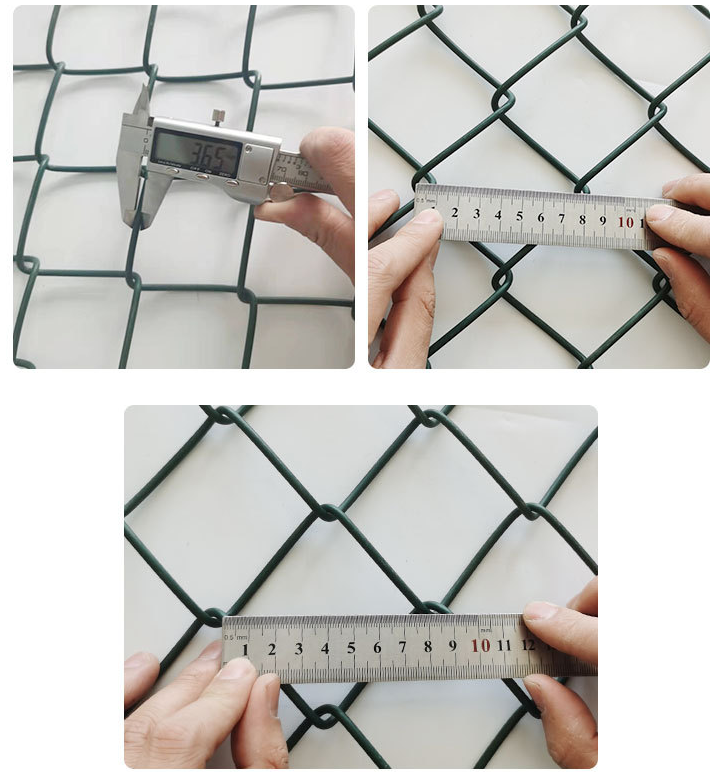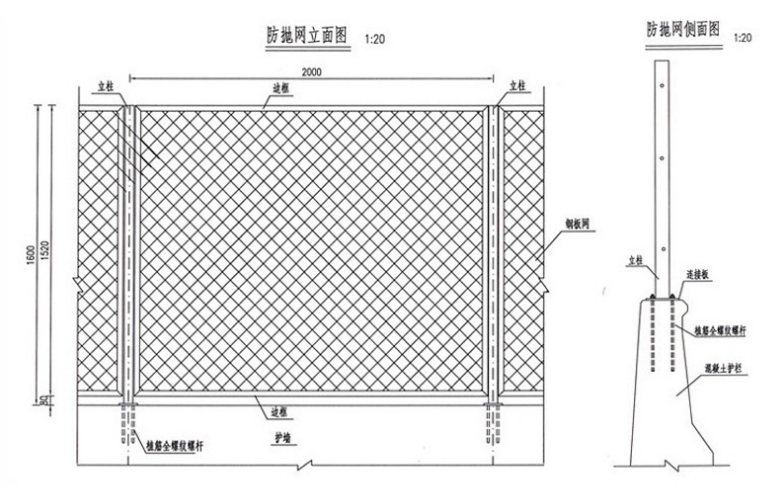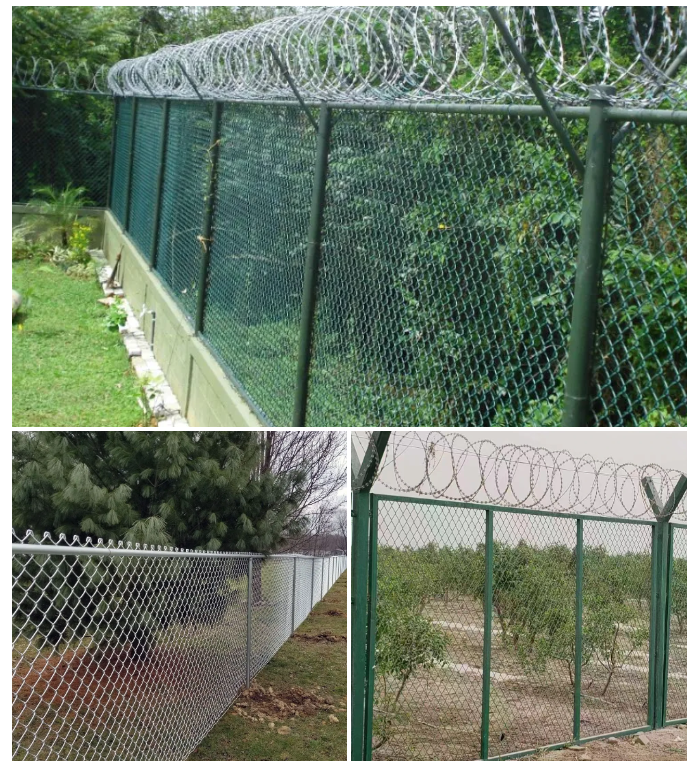How to Choose the Perfect Chain Link Fence for Your Property
Time:
2025-02-26
Chain link fencing is a versatile, durable, and cost-effective solution for both residential and commercial properties. Whether you’re looking to secure your backyard, protect a commercial site, or create a boundary for a sports facility, choosing the right chain link fence requires careful consideration of several factors. This guide will walk you through the key elements to help you make an informed decision.

1. Understand the Wire Material Options
The material of the chain link wire plays a significant role in the fence’s durability, maintenance, and cost. Here are the most common options:
- Galvanized Steel: This is the most affordable and widely used option. The wire is coated with zinc to prevent rust and corrosion. While it requires minimal maintenance, it typically lasts around 12 years.
- PVC-Coated Galvanized Steel: For added protection and aesthetics, PVC coating is applied over the galvanized wire. This option is ideal for areas exposed to harsh weather or saltwater, as it resists rust and corrosion better than plain galvanized steel. It also comes in various colors, such as black or green, to blend with your property’s design.
- Aluminum: Naturally resistant to rust and corrosion, aluminum is a lightweight and durable option. It’s often used in commercial or public spaces and can last up to 25 years with minimal upkeep.
- Stainless Steel: The most durable and expensive option, stainless steel is resistant to rust, corrosion, and wear. It’s commonly used in high-security areas like airports, highways, and industrial sites.
2. Consider Wire Gauge and Mesh Size
The wire gauge and mesh size determine the fence’s strength and security.

- Wire Gauge: The lower the gauge number, the thicker and stronger the wire. For residential fences, a 11- or 12-gauge wire is sufficient. For high-security or commercial applications, opt for a 9- or 10-gauge wire.
- Mesh Size: The diamond-shaped openings in the mesh range from 25mm to 100mm. Smaller mesh sizes (e.g., 50mm) provide greater security and are ideal for keeping small animals in or out. Larger mesh sizes (e.g., 60mm) are commonly used in residential settings.
3. Choose the Right Height
Chain link fences come in various heights to suit different needs:
- Residential Fences: Typically range from 1.2m to 1.8m in height.
- Security Fences: Usually 1.8m to 2.7m tall, often with additional barbed wire for added protection.
- Sports Facilities: Tennis courts and other sports areas often require fences as tall as 3m to 3.6m.
4. Select the Appropriate Selvedge Type
The selvedge refers to the finish at the top and bottom of the chain link mesh:
- Knuckle/Knuckle: Smooth and safe, this is ideal for residential areas where children or pets are present.
- Knuckle/Barb: Features a smooth top and barbed bottom, making it harder to climb. It’s commonly used in commercial or security fencing.
- Barb/Barb: The most secure option, with barbs on both ends. This is typically used in high-security applications.

5. Decide on Posts and Rails
The fence’s framework is just as important as the mesh itself.

- Material: Galvanized steel posts and rails are the standard choice. They come in various diameters and lengths, with thicker posts used for corners, gates, and high-security areas.
- Spacing: Intermediate posts should be spaced no more than 3.3m apart for stability.
- Rails: Top and bottom rails help brace the fence and prevent the mesh from sagging or lifting.
6. Add Extra Features for Security and Aesthetics

- Barbed Wire: For added security, consider installing barbed wire along the top of the fence.
- Gates: Choose gates that match the height and mesh size of your fence. They come in standard widths (1m to 6m) and can be customized for specific needs.
- Color Options: PVC-coated fences and powder-coated posts are available in various colors to enhance the fence’s appearance.
7. Think About Installation and Maintenance
Proper installation ensures the fence’s longevity and effectiveness. Use tie wire to securely attach the mesh to the posts and rails. For maintenance, inspect the fence regularly for rust, loose ties, or damage. PVC-coated fences require less upkeep compared to plain galvanized steel.
Conclusion
Choosing the right chain link fence involves evaluating your specific needs, budget, and environmental conditions. By considering factors like wire material, gauge, mesh size, height, and additional features, you can select a fence that provides security, durability, and aesthetic appeal for your property.
If you’re unsure where to start, consult with a professional fencing company to ensure you get the perfect chain link fence tailored to your requirements.
Ready to install your chain link fence? Contact us today for expert advice and high-quality fencing solutions!
keyword:
Chain Link Fence Material,How to Choose the Perfect Chain Link Fence
Share the












